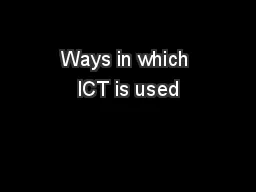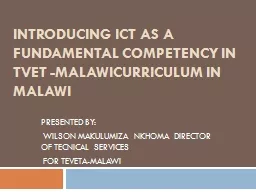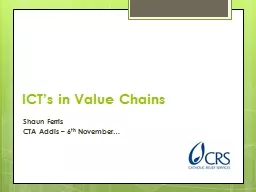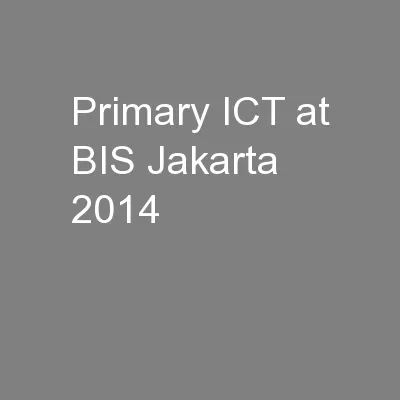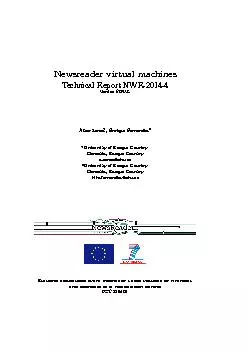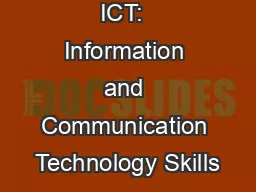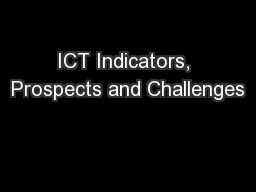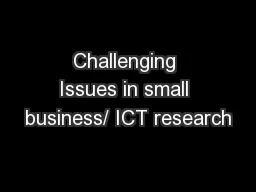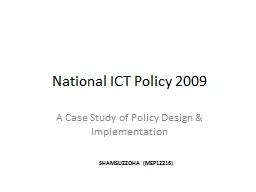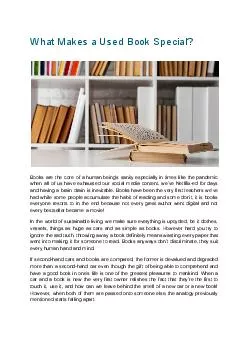PPT-Ways in which ICT is used
Author : stefany-barnette | Published Date : 2018-01-12
What is batch processing Sometimes we have a lot of data to process and it is all of a similar form eg we might have to calculate the pay for 10000 employees
Presentation Embed Code
Download Presentation
Download Presentation The PPT/PDF document "Ways in which ICT is used" is the property of its rightful owner. Permission is granted to download and print the materials on this website for personal, non-commercial use only, and to display it on your personal computer provided you do not modify the materials and that you retain all copyright notices contained in the materials. By downloading content from our website, you accept the terms of this agreement.
Ways in which ICT is used: Transcript
Download Rules Of Document
"Ways in which ICT is used"The content belongs to its owner. You may download and print it for personal use, without modification, and keep all copyright notices. By downloading, you agree to these terms.
Related Documents

